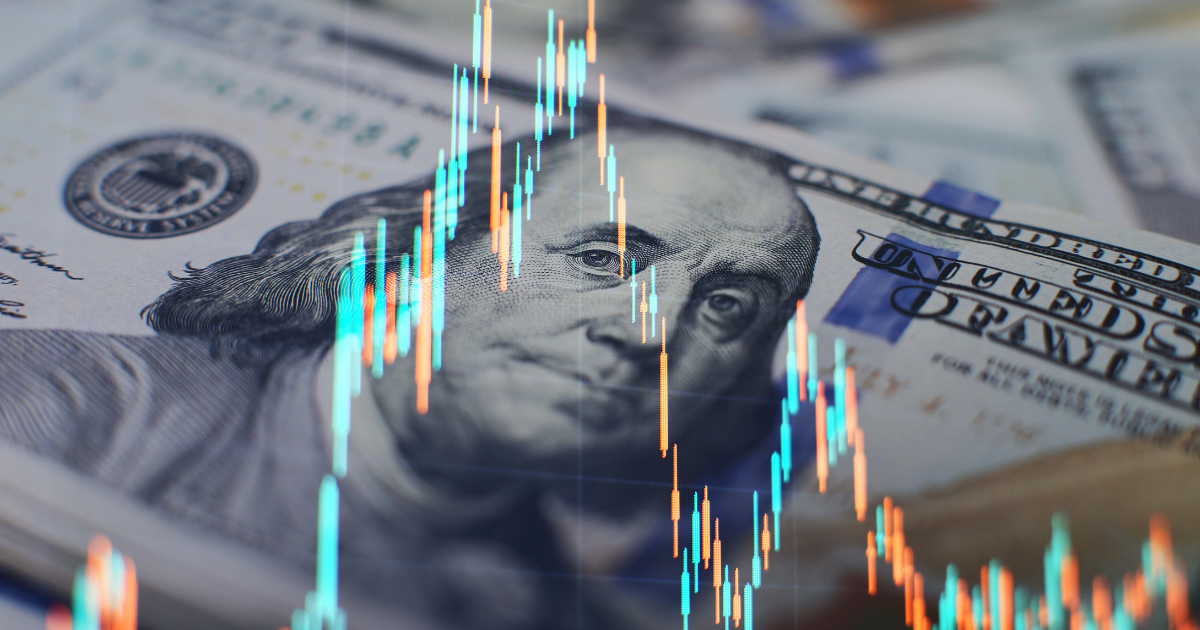
©Изображения пользователя Maximusnd Zahar via Canva.com
No More Fed Rate Hikes Predicted Amidst Employment Uncertainty
November 3, 2023
US stocks experienced a significant rise on Thursday, bolstered by investor optimism that the Federal Reserve may have concluded its cycle of fed rate hikes that have strained the economy.
The Dow Jones Industrial Average rallied by 565 points, marking a 1.7% increase. Concurrently, the S&P 500 index, a broad measure of American stock performance, was up by 1.9%, and the tech-centric Nasdaq Composite Index increased by 1.8%.
Both the S&P 500 and Dow are on the verge of recording their most substantial weekly gains for the current year. Additionally, the Dow enjoyed its best trading day since June.
In the bond market, Treasury yields have made a dramatic fall from the previous month’s peak of over 5%. Specifically, the 10-year Treasury yield fell approximately 0.12% on Thursday, closing at 4.66%.
Financial markets reacted on Wednesday after the Federal Reserve decided to maintain its current interest rates, marking the second consecutive period of steady rates. As a result, the Dow advanced by over 220 points.
Fed Chair Jerome Powell’s satisfaction with the declining inflation trend further boosted investor sentiment. A consequent survey conducted using the CME FedWatch tool indicated that 85.5% of investors anticipate that the Federal Reserve will maintain the current rates in its next December meeting.
Fed Rate Hike Affected by Job Market
CNN reported that “the market’s focus now turns to Friday’s jobs report, which is expected to show solid employment growth. Analysts predict 180,000 jobs were added to the economy in October, according to Refinitiv. The unemployment rate is expected to hold steady at 3.8%.”
Yahoo!finance added another perspective.
Recent data from Thursday revealed a decrease in prices and potential easing of the labor market, which has demonstrated consistent strength. According to the Labor Department, labor costs experienced an unexpected 0.8% drop last quarter. In addition, the number of first-time claims for unemployment benefits increased for the second consecutive week, with 217,000 initial unemployment insurance claims for the week ending October 28. This marked a rise of 5,000 claims from the previous week’s revised total.
A recent drop in job growth and a cooling of wage pressures in the US could provide Federal Reserve policymakers with renewed assurance that the national economy is recovering from the aftershocks of the COVID-19 pandemic. This may potentially pave the way for a continued softening of inflation rates without necessitating further boosts in interest rates.
This understanding is being echoed in financial circles following the release of a report by the Labor Department. The production of nonfarm payroll jobs experienced an increase of 150,000 in the past month, falling short of the pre-pandemic trend for the third time since December 2020.
This slow pace of job creation, combined with a slower rise in hourly wages, could suggest a shift in the US economic landscape. The report indicated that hourly earnings escalated by 4.1% from the same period a year ago, marking the most modest increment since June 2021.
These recent economic trends could be seen as positive indicators by Federal Reserve policymakers. A deceleration in job growth and wage pressures could demonstrate a return to more stable economic conditions after the turmoil caused by the coronavirus pandemic. This could potentially allow for a consistent decline in inflation without the need to resort to further interest rate hikes.
This changing economic outlook may affect the Federal Reserve’s strategies for dealing with the ongoing economic aftereffects of the pandemic. Policymakers may see this as a sign that the US economy is adjusting and returning to a new normal after the disruptions the pandemic brought to the labor market and broader economy.
Recent News
Amazon Debuts New Streaming Ads on Prime
Amazon Ads has unveiled new ad formats for Prime Video users.
Babies“R”Us Is Returning to Some Kohl’s Stores
The openings should begin later in 2024.
Reddit Reveals New Policies and AI Licensing Ventures
Reddit Inc. has unveiled fresh guidelines governing data on its platform, aiming to bolster its revenue streams through licensing deals with AI developers and other firms.
April Retail Sales Showed Moderate Growth
Retail sales in April showed a modest uptick compared to the previous month, according to the latest CNBC/NRF Retail Monitor. However, a year-over-year decline was observed, attributed largely to the timing of Easter.


